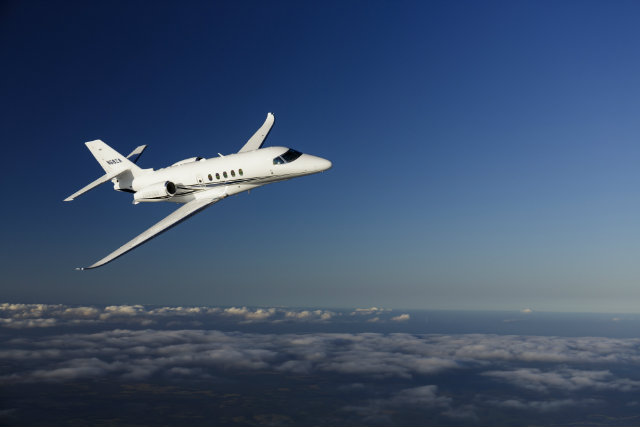Textron Aviation saw profits rise in 2015 on the back of increased deliveries driven by the entry into service of Cessna’s eagerly anticipated Citation Latitude business jet and the continued popularity of the Beechcraft King Air twin-engined turboprop family.
For the period ended 31 December, Textron Aviation shipped 166 Cessna Citations – including 16 Latitudes – and 117 Beechcraft King Airs. This was up from respective totals of 159 and 113 for the same period in 2014.
Fourth quarter deliveries were also up on the previous year, with 60 Citations and 33 King Airs handed over, compared with 55 and 41 for the same period a year earlier.
Revenues for Textron Aviation rose $300 million last year to $4.8 billion while profits increased by about $150 million to $400 million.
Speaking on a full-year earnings call on 27 January, Textron chief executive Scott Donnelly said: “We see the market as kind of about where we expected to be. It is performing well, particularly the US, but it is pretty soft internationally.”
He said while Textron did not see strong growth last year, its aircraft volumes did increase. This trend is expected to continue throughout 2016 with about 30 Latitude deliveries planned and projected revenues of $5.1 billion.

Textron Aviation (Cessna Citation Latitude)
Robust future performance will be primarily driven by new products, Donnelly says, as “legacy models will be sort of flattish”.
Last year saw the launch of two new Cessna programmes – the Longitude and Hemisphere – described by Donnelly as “game changers”. Cessna will also unveil a clean-sheet single-engined turboprop in July, powered by GE Aviation's in-development 1,300shp (970kW) GE93 engine.
The super-midsize Longitude he says, “has superior operating performance compared with any aircraft in its class and should provide meaningful contributions to revenue and profits at [Textron] Aviation, after its expected entry into service late next year”.
He is confident Cessna's large-cabin Hemisphere will open up a new market for Textron in a niche segment below established models such as the Dassault Falcon 7X and Gulfstream G450. “The Hemisphere is designed to be slotted one tier below that echelon of aircraft where there has been a lot of reinvestment by [the] big iron guys,” he says. “It’s a well-served market. We are not going there.”
First flight of the Hemisphere is targeted for 2019, leading to service entry early in the next decade.
Meanwhile, Textron’s sister company Bell Helicopter will be hoping new product development will boost its fortunes after a year of falling profits and deliveries.
The company saw profits slide by 24% in 2015, to $400 million. Revenues declined during the period by 19% to $3.5 billion.
Civil helicopter shipments slipped by three units to 175, while deliveries of military types fell from 61 in 2014 to 48 last year.
Donnelly says the “soft international market” has hit sales of its 412 medium-twin particularly hard, but he is confident Bell’s in-development 505 Jet Ranger X light single and 525 super medium-twin will bolster the company’s growth.
Source: Flight International



















